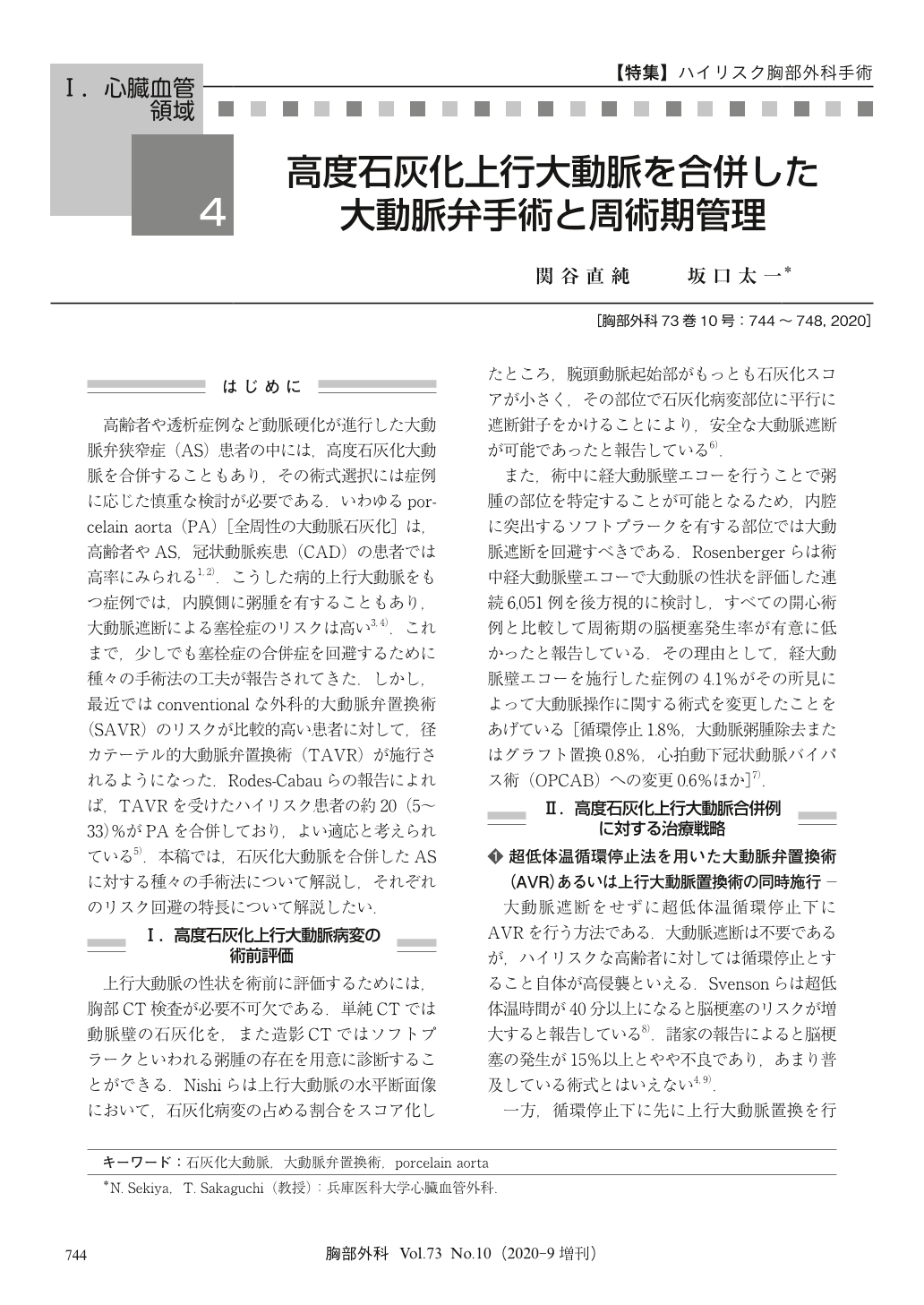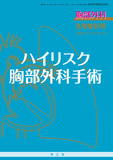Japanese
English
- 有料閲覧
- Abstract 文献概要
- 1ページ目 Look Inside
- 参考文献 Reference
高齢者や透析症例など動脈硬化が進行した大動脈弁狭窄症(AS)患者の中には,高度石灰化大動脈を合併することもあり,その術式選択には症例に応じた慎重な検討が必要である.いわゆるporcelain aorta(PA)[全周性の大動脈石灰化]は,高齢者やAS,冠状動脈疾患(CAD)の患者では高率にみられる1,2).こうした病的上行大動脈をもつ症例では,内膜側に粥腫を有することもあり,大動脈遮断による塞栓症のリスクは高い3,4).これまで,少しでも塞栓症の合併症を回避するために種々の手術法の工夫が報告されてきた.しかし,最近ではconventionalな外科的大動脈弁置換術(SAVR)のリスクが比較的高い患者に対して,径カテーテル的大動脈弁置換術(TAVR)が施行されるようになった.Rodes-Cabauらの報告によれば,TAVRを受けたハイリスク患者の約20(5~33)%がPAを合併しており,よい適応と考えられている5).本稿では,石灰化大動脈を合併したASに対する種々の手術法について解説し,それぞれのリスク回避の特長について解説したい.
Severe atherosclerosis of the ascending aorta frequently causes difficulties during heart operations, hindering surgical maneuvers and potentially leading to systemic embolism. There have been several methods to solve these problems but the best way to treat patients requiring aortic valve replacement (AVR) has not been established yet. Surgical techniques for AVR in these patients include AVR under deep hypothermic circulatory arrest with or without endarterectomy of the ascending aorta or replacement of the ascending aorta. Endovascular clamping using a balloon is another approach but require manipulation of the heavily calcified aorta that may result in a certain risk for stroke. Another option to avoid the ascending aorta and cross-clamping is the apico-aortic conduit. Trans-catheter AVR (TAVR), especially trans-apical AVR, has been shown to be feasible in such patients. Large studies and longer follow-up will be required to scientifically prove the superiority of trans-apical AVR over conventional surgical strategies in patients with porcelain aorta requiring AVR.

© Nankodo Co., Ltd., 2020


